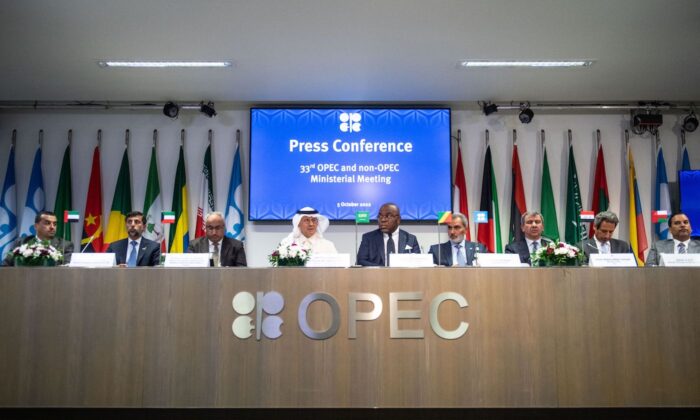OPEC+ reaffirmed plans to ease oil production cuts gradually, resisting President Donald Trump’s pressure for a more aggressive moves to lower prices.
The Organization of the Petroleum Exporting Countries and its allies (OPEC+) on Monday reaffirmed its earlier plan to gradually ease production cuts beginning in April 2025, despite pressure from President Donald Trump for bolder action that would lower oil prices.
The decision, made during the 58th Joint Ministerial Monitoring Committee (JMMC) meeting on Feb. 3, was in line with previous commitments to unwind 2.2 million barrels per day (bpd) of cuts over an extended period until September 2026.
The move comes amid a history of strained relations between OPEC+ and Trump, who previously pushed the group to increase production to counter the impact of U.S. sanctions on Iran.
Since reclaiming the presidency, Trump has renewed his calls for OPEC to ramp up supply, saying that elevated oil prices are helping to finance Russia’s war in Ukraine.
“I’m also going to ask Saudi Arabia and OPEC to bring down the cost of oil. You got to bring it down, which, frankly, I’m surprised they didn’t do before the election,” Trump said on Jan. 22 during the World Economic Forum summit in Davos, Switzerland. “If the price came down, the Russia-Ukraine war would end immediately. Right now, the price is high enough that that war will continue.”
Russia’s Deputy Prime Minister Alexander Novak told the Rossiya-24 TV channel, as reported by Russian state-run media Tass, that OPEC+ discussed Trump’s request to increase oil production and reaffirmed its plan to begin gradually raising output from April 1, as previously agreed. Novak called the actions under the OPEC+ plan an “absolutely good” tool for the crude market and accused Trump of trying to unfairly bend the oil market to his will.
At the OPEC+ meeting, Novak said, per Tass, that the oil-producing countries are “experiencing new challenges from the new U.S. administration with its call for OPEC countries to cut oil prices and, in a non-competitive way, essentially take over part of the market.”
“Attempts at artificial, unfair interference in the mechanisms of the global oil market are strongly unacceptable,” he said.
Monday’s OPEC+ ministerial meeting took place amid a short-lived jump in oil prices following Trump’s announcement of tariffs on Mexico, Canada, and China—three of the United States’ largest trading partners—which fueled fears of potential supply disruptions.
However, crude prices erased their early gains after Trump delayed imposing tariffs on Mexico for a month. U.S. oil was down around 1.75 percent at $72.46 per barrel at around 1:15 p.m. on Feb. 3, well below the recent peak of $83 per barrel reached on Jan. 15.
The ministerial meeting also saw OPEC+ replacing the U.S. Energy Information Administration (EIA) as one of its secondary sources used for monitoring its production and adherence to supply agreements, a move that raises questions about the group’s transparency and its relationship with the U.S. government.
“After thorough analysis from the OPEC Secretariat, the Committee replaced Rystad Energy and the Energy Information Administration (EIA) with Kpler, OilX, and ESAI, as part of the secondary sources used to assess the crude oil production and conformity,” OPEC+ said in a statement.
The reason for OPEC’s move to drop EIA as a secondary source is unclear. EIA did not respond to a request for comment on the decision by publication time.
Kpler said in a post on X that it views the move as an acknowledgment of the accuracy and reliability of its data. “We’re excited to contribute to OPEC’s vital work and continue delivering trusted insights to the energy market,” the group said.
The next OPEC+ ministerial meeting is scheduled for April 5, 2025. At this meeting, ministers will review market conditions and assess compliance before finalizing the planned production increase, which is set to begin in April.

